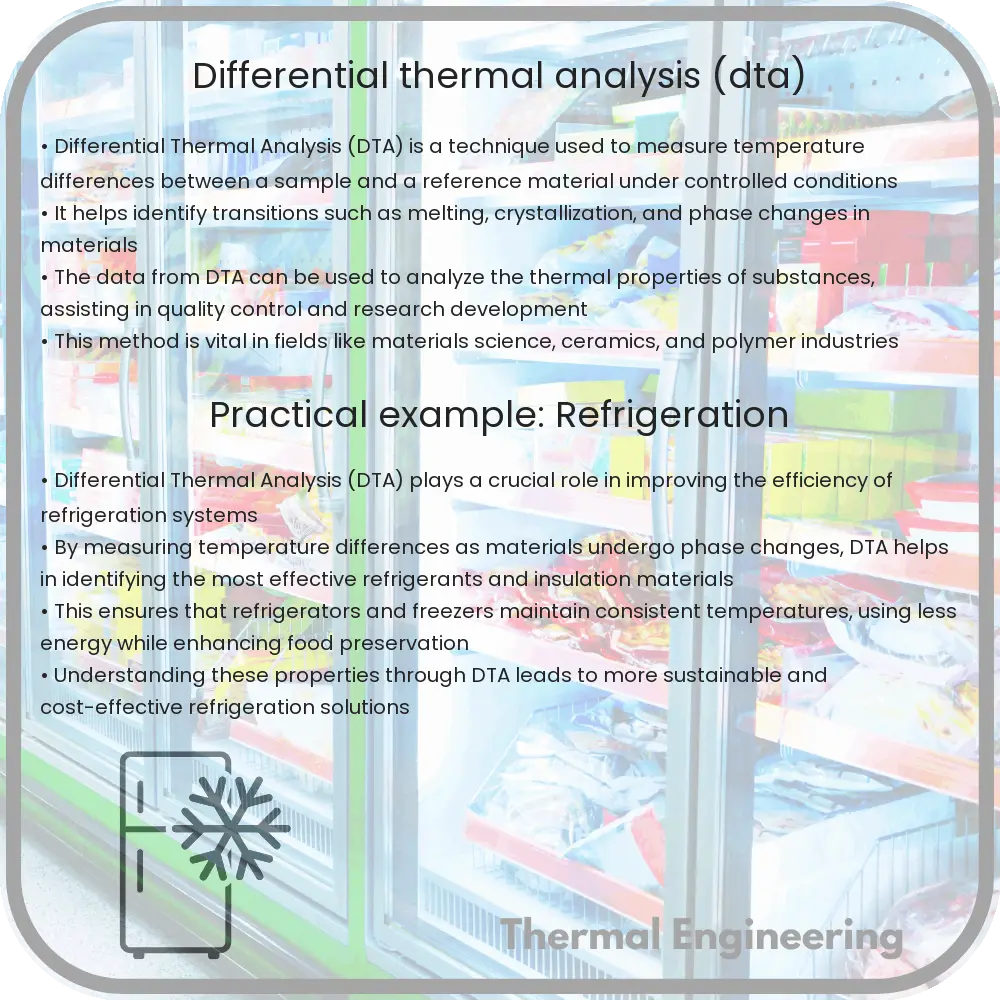Learn about Differential Thermal Analysis (DTA), a key technique in material science for measuring temperature differences in controlled conditions.

Understanding Differential Thermal Analysis (DTA)
Differential Thermal Analysis (DTA) is a thermoanalytic technique widely used in material science, chemistry, and engineering to measure temperature differences between a sample and a reference under controlled conditions. It helps in identifying and characterizing materials based on their thermal stability and composition. This article will delve into the basics of DTA, how it works, and its applications.
Principles of Differential Thermal Analysis
At the core of DTA is the measurement of the temperature difference (ΔT) between a substance under study and an inert reference as both are subjected to identical thermal conditions in a controlled atmosphere. This temperature difference arises due to exothermic or endothermic processes occurring in the sample but not in the reference. The reference material should ideally have no thermal events but should match the sample in terms of heat capacity and conductance.
The DTA setup includes a furnace, temperature controllers, thermocouples, and a recording system. A typical DTA curve displays temperature on the X-axis against ΔT on the Y-axis. Endothermic reactions, like melting or evaporation, result in negative peaks, as the sample absorbs heat. Exothermic reactions, like crystallization or oxidation, produce positive peaks, as the sample releases heat.
Common Applications of DTA
- Phase Transition Analysis: DTA is instrumental in determining melting, boiling, and sublimation points. It helps to detect phase transitions, such as crystallization and glass transitions in polymers.
- Thermal Stability: By monitoring decomposition temperatures, DTA can assess the thermal stability of materials, which is crucial in materials engineering and safety evaluations.
- Composition Analysis: Changes in thermal properties can indicate differences in composition, helping in the formulation or verification of compound mixtures in industries like pharmaceuticals and ceramics.
- Quality Control: DTA is used for quality control in construction materials like cements and clays to ensure consistency in their thermal properties.
Advantages of Differential Thermal Analysis
DTA offers several advantages over other thermal analysis techniques:
- Sensitivity: DTA allows for the detection of small thermal events thanks to the direct measurement of temperature differences.
- Versatility: It can analyze solid, liquid, and powdered samples, making it suitable for a wide range of materials.
- Quantitative Analysis: Although primarily qualitative, DTA can be used quantitatively with additional calibrations to measure specific heat changes and reaction enthalpies.
Challenges in Differential Thermal Analysis
While DTA is a powerful tool, it does have limitations:
- Baseline Drift: Changes in thermal conductivity between the sample and reference can lead to baseline drifts, complicating the interpretation of results.
- Temperature Calibration: Accurate temperature calibration is essential for precise measurements, and errors can occur if the calibration drifts.
- Sample Preparation: Inconsistent sample preparation can affect the reproducibility and accuracy of the DTA results.
Conclusion
Differential Thermal Analysis remains a fundamental technique in materials research and engineering. Understanding its principles, applications, and limitations can help in choosing the appropriate method for thermal analysis, ensuring that the results are both accurate and reliable. By harnessing the abilities of DTA, engineers and scientists continue to innovate and improve material properties for a variety of applications.